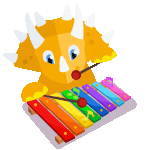Time Travel Through Russia: History Made Easy for Kids
The history of Russia is a story full of battles, emperors, invasions, and amazing changes. From small kingdoms to a giant empire, from royal families to revolutions, Russia has gone through centuries of transformation to become the country we know today. This exciting and sometimes challenging story helps kids understand how Russia grew, struggled, and shaped the modern world.
Let’s explore some of the most important chapters in Russian history—designed just for curious young learners.
The Beginning: Princes and Vikings
The early days of Russia started like many other countries: with groups of people settling in the land and forming communities. Around the ninth century, a group of Viking-like people from Scandinavia, called the Varangians, crossed the Baltic Sea and entered Eastern Europe. Led by a man named Oleg, they took control of Kiev and started a trade route that would last more than 300 years.
Oleg’s grandson, Vladimir I, became the ruler in the year 989. Later, another ruler named Yaroslav (or Ysaroslav) helped make the kingdom stronger. But after his death, battles for power broke out, and foreign invaders started arriving.
The Mongols and the Rise of Moscow
During the 1200s, the Mongols invaded and destroyed many major cities, creating an empire known as the Golden Horde. After the Mongols, the Swedes and Livonians also tried to conquer Russia. But one city—Moscow—grew stronger during this time. A ruler named Ivan IV, also known as Ivan the Terrible, helped unify the Russian lands into one powerful state.
When his son Fyodor ruled, followed by King Godunov, other countries like Poland also took over parts of Russia. Eventually, a new family called the Romanovs began ruling. They stayed in power for over 300 years.
Peter the Great and the Building of St. Petersburg
One of the most famous Russian rulers was Peter the Great. He wanted to modernize Russia and make it more like countries in Europe. He even moved the capital city from Moscow to a new city he built himself: St. Petersburg, located by the Gulf of Finland. Peter brought new ideas, built ships, and changed how the Russian government worked. When he died in 1725, Russia was already becoming a strong European power.
After Peter, many rulers came and went. But in 1761, Catherine the Great became empress and continued to modernize the country. She opened museums, founded colleges and libraries, and supported education and the arts.
Wars, Revolutions, and a Changing Empire
In the 1800s, rulers like Nicholas I and Alexander II led the country. Russia kept expanding its land and influence. But trouble came when Japan attacked and Russia faced challenges at home. By 1912, political groups like the Bolsheviks and Mensheviks formed. A few years later, food shortages and economic problems led to the end of the monarchy.
After a short period with a temporary government, Vladimir Lenin and the Bolsheviks took control. This led to a civil war in Russia, but by 1920, the Bolsheviks had won, and a new type of government began.
The Soviet Era and World Wars
Lenin died in 1924, and after a power struggle, Joseph Stalin became the leader. He made many changes, including government-run farms and strict control over people’s lives. Religion was limited, and freedom of speech was reduced.
In 1941, Germany attacked the Soviet Union during World War II. The Russian army fought back and pushed the Germans out. By the end of the war, Russia had become one of the two superpowers in the world, along with the United States.
However, most of the country’s money was spent on the military, and ordinary people suffered. They had little food and lost many freedoms.
From Cold War to Modern Russia
After Stalin died in 1953, leaders like Khrushchev, Brezhnev, Andropov, and Chernenko each tried to make changes. But it was Mikhail Gorbachev, in 1985, who brought the biggest shift. He introduced “openness” and “restructuring” to allow more freedom and better living conditions.
In 1989, open elections were held. By 1991, the Soviet Union came to an end. A new leader, Boris Yeltsin, helped create the Russian Federation. The famous Soviet flag came down, and the tricolored Russian flag was raised.
Russia Today
Vladimir Putin became the president of Russia and has served in leadership for many years. He has helped improve the economy and brought changes to modern Russia. Today, the country continues to be a global power with a rich and complicated history behind it.
Learn About Russian History with Dinolingo
Understanding the history of a country helps children connect with its people, language, and culture. That’s why platforms like Dinolingo make learning Russian fun and educational. With videos, games, and storytelling, kids can learn not only the Russian language but also explore its past in an engaging and age-appropriate way. Historical themes, famous figures, and national traditions are woven into the lessons to help children grow curious and culturally aware.
A Nation Built by Stories and Struggles
Russia’s journey from early kingdoms to modern times is full of courage, creativity, and change. Each era shaped the people, language, and culture of the country. By exploring Russian history, kids can better understand how the world has changed—and how learning about the past can make the future even more exciting.
Start Learning a New Language Today!
Best Language App for Kids.
7-day free trial. Then only $19/month. Cancel anytime.
